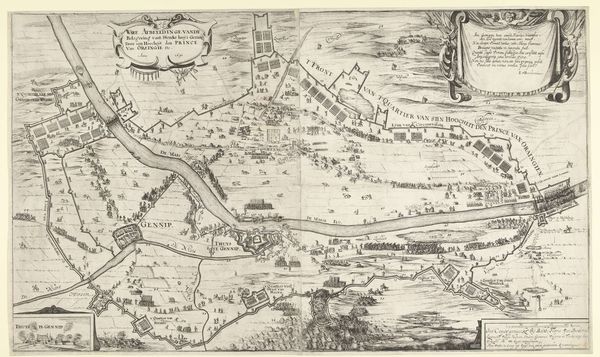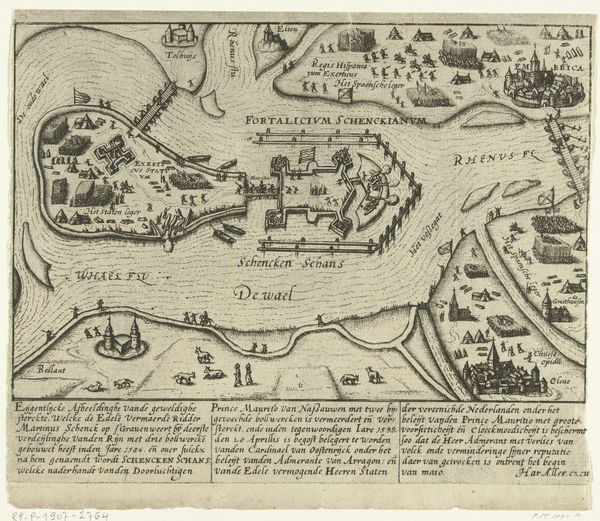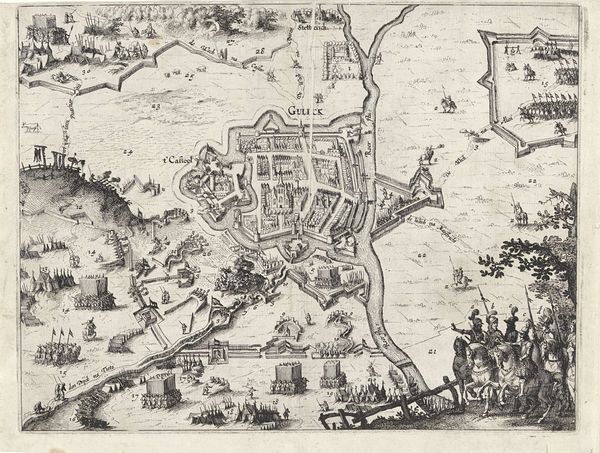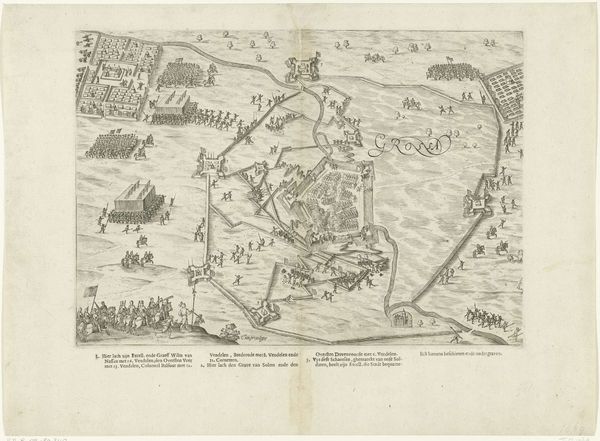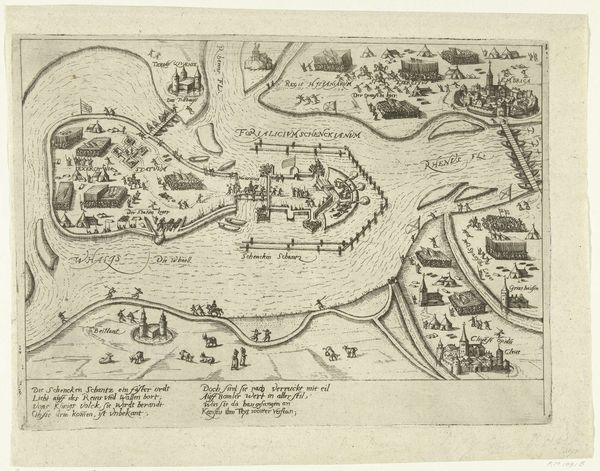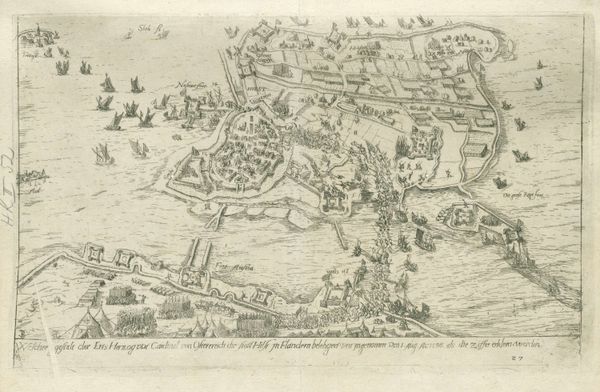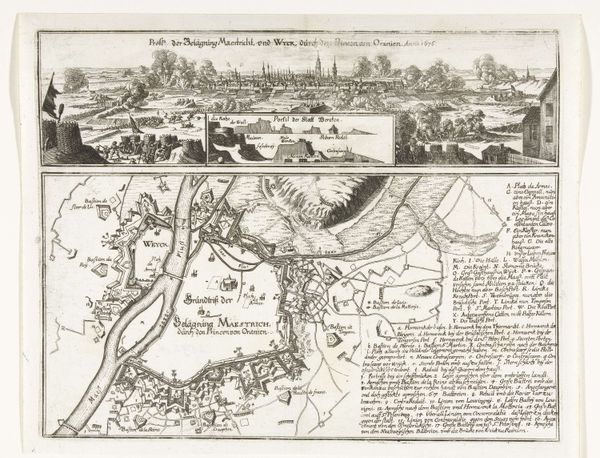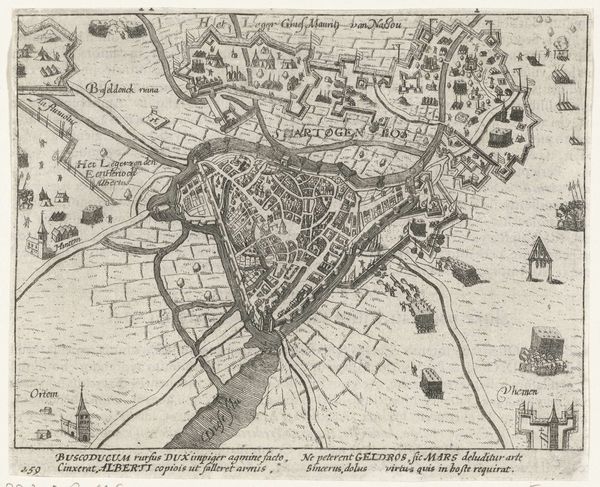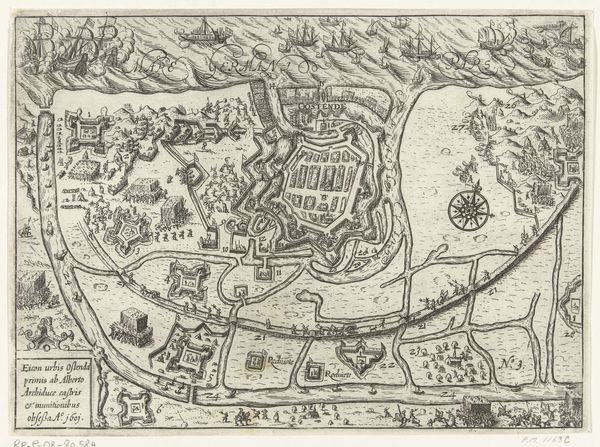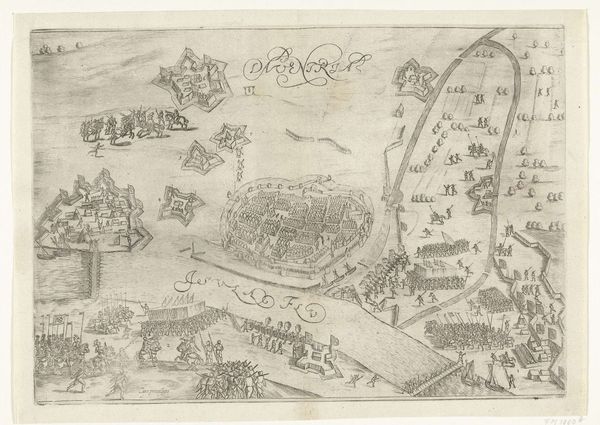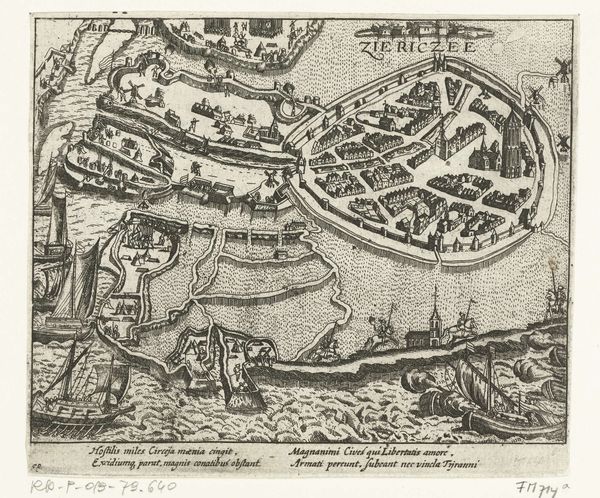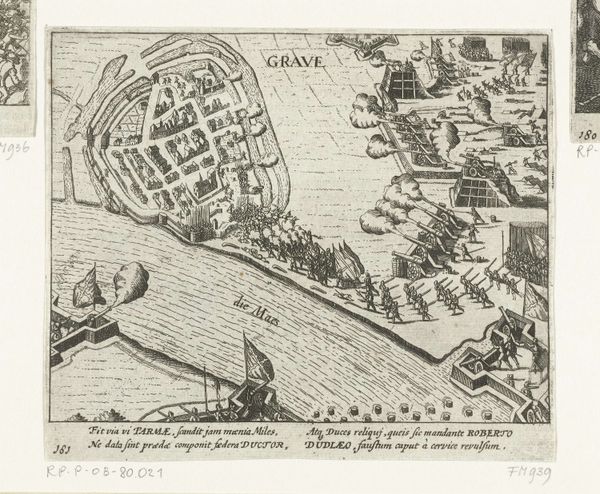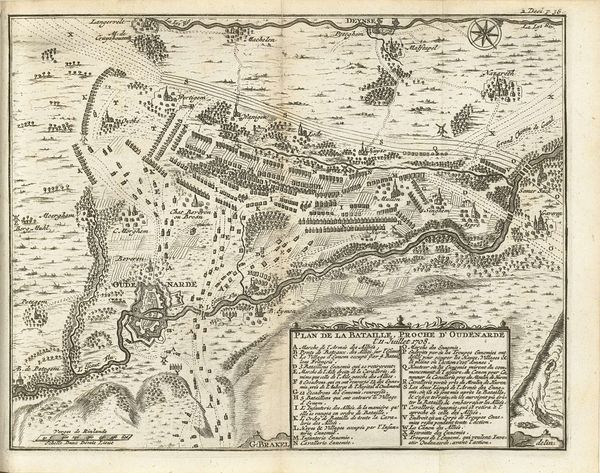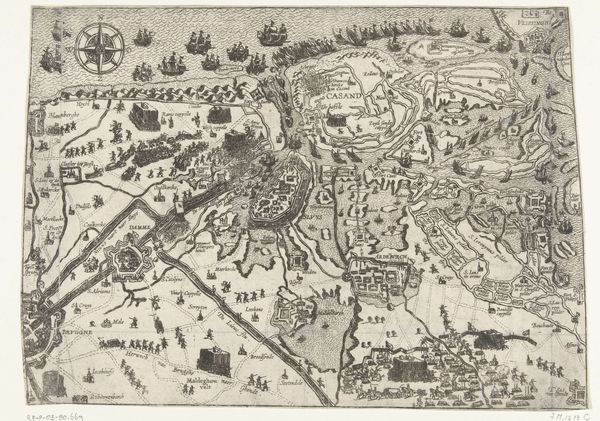
Verovering van schansen in de omgeving van Groningen, 1593 1593 - 1595
0:00
0:00
print, engraving
# print
#
landscape
#
cityscape
#
history-painting
#
northern-renaissance
#
engraving
Dimensions: height 222 mm, width 275 mm
Copyright: Rijks Museum: Open Domain
Editor: This engraving, titled "Verovering van schansen in de omgeving van Groningen, 1593" by Frans Hogenberg, depicts a landscape view. It's incredibly detailed, almost like a map, and it gives a strong sense of the military actions taking place. How should we interpret this work? Curator: For me, it's compelling to see this image as a record of material production – both the physical objects represented and the engraving itself as a manufactured artifact. Consider the copperplate: mined, processed, and then meticulously etched by a craftsman. How does this lens shift your initial impression? Editor: That's fascinating! Thinking about the production, the act of engraving translates power and resources. It highlights the tangible effort involved in documenting and perhaps glorifying military conquest. The very lines are a testament to labor. Curator: Precisely! The choice of printmaking, too, democratized access to information, enabling widespread circulation of this specific perspective on the conflict. And what about the materials being deployed within the depicted conquest itself? Editor: So, it's not just the *representation* of war, but the materiality of war, right? Like the fortifications, weapons, clothing... it all speaks to available resources and their deployment for strategic dominance. Curator: Absolutely. Reflect on the social context: who commissioned this work, who consumed it, and what political messages were intended? Think about its use in propaganda. It's not just an artwork but a material object actively shaping historical narratives. Editor: It changes everything, viewing this not just as art but as a consciously crafted piece of media, made with specific materials for a defined purpose and audience. Thanks for making me aware of the importance of considering the processes of labor. Curator: Exactly. Remembering that artistic creations are rooted in real-world materials and contexts deepens our appreciation. This approach connects aesthetics to the messy realities of history and labour.
Comments
No comments
Be the first to comment and join the conversation on the ultimate creative platform.
